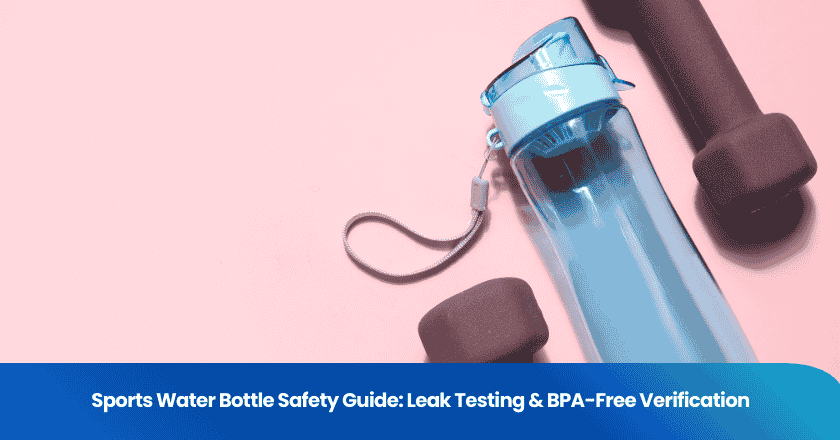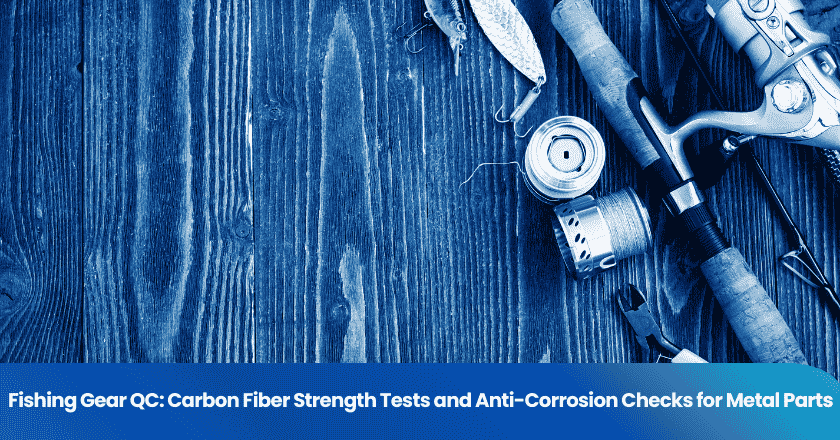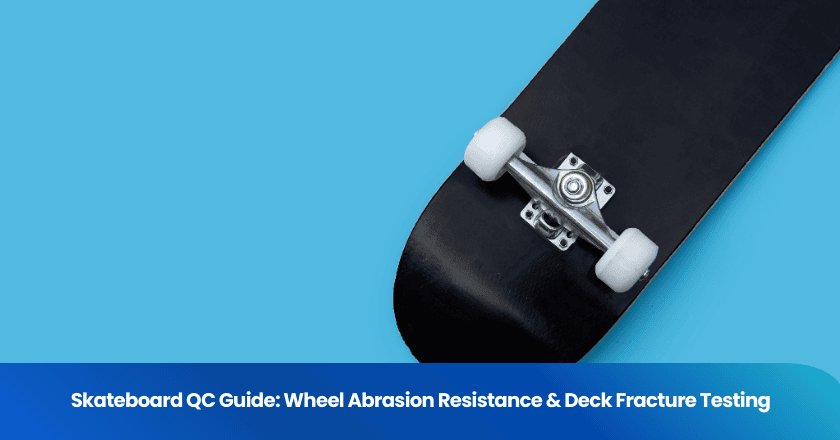
You want a quality inspection process that works—one that does not overwhelm you. A quality inspection plan gives you control, consistency, and peace of mind. You can spot problems early and avoid costly mistakes. With a clear plan, you ensure every quality inspection meets your standards. Quality inspection examples show you real strategies that deliver results. A solid plan helps you meet compliance, reduce defects, and build trust in your work. Anyone can follow a quality inspection plan, no matter your experience.
Key Takeaways
- A quality inspection plan helps you catch problems early, keep standards high, and avoid costly mistakes.
- Clear objectives, roles, and inspection criteria make your inspection process organized and effective.
- Using checklists and documenting results ensures consistency and supports continuous improvement.
- Customize your plan to fit your industry rules and product complexity for the best results.
- Regularly review and update your plan to stay compliant, improve quality, and build trust with customers.
What Is a Quality Inspection?
Definition
You perform a quality inspection to check if a product or process meets specific quality standards. This process involves examining, measuring, or testing items to ensure they match the requirements set by your company or industry. In quality inspection in manufacturing, you look for defects, inconsistencies, or deviations from the expected results. You use tools, checklists, and clear criteria to guide your evaluation. Quality inspection forms a key part of quality control and quality assurance. You rely on this process to confirm that products are safe, reliable, and ready for customers.
Importance
You cannot achieve strong quality control without a solid quality inspection plan. Quality inspection in manufacturing helps you catch problems early, which saves time and resources. When you follow strict quality standards, you reduce the risk of recalls or customer complaints. You also build trust with your clients and partners. Quality inspection supports quality assurance by providing evidence that your processes work as intended. You use inspection results to improve your operations and meet regulatory requirements.
Tip: Consistent quality inspection ensures you maintain high quality standards and meet customer expectations every time.
You make quality inspection a routine part of your workflow. This habit leads to fewer defects and higher satisfaction. Quality inspection in manufacturing also helps you comply with industry regulations and safety guidelines. You protect your reputation and deliver products that meet or exceed quality standards.
Key Elements of a Quality Inspection Plan
Objectives
You set clear objectives at the start of your quality inspection plan. These objectives guide your inspection test plan and help you focus on what matters most. You might want to ensure products meet quality standards, reduce defects, or comply with regulations. Your objectives should align with your quality management plan and support your quality management system. When you define objectives, you make it easier to measure success and improve your quality control process.
Roles and Responsibilities
You assign roles and responsibilities to your team in your inspection test plan. Each person knows their tasks and understands how they contribute to quality control. You might have inspectors, supervisors, and quality assurance staff. You use a quality inspection checklist to clarify duties. This structure supports your quality management system and ensures accountability. When everyone knows their role, you avoid confusion and improve your quality control inspection reports.
Inspection Criteria
You set inspection criteria based on defined requirements and must have product requirements. These criteria form the backbone of your inspection test plan. You use specifications, quality standards, and industry guidelines to create your quality control checklist. Your inspection checklist lists what you will check, measure, or test. You ensure your inspection test plan covers all critical points. This approach supports both quality assurance and quality control.
Tip: Use a table to organize your quality control checklists and make your inspection test plan easy to follow.
| Inspection Item | Criteria | Method | Frequency |
|---|---|---|---|
| Visual Check | No defects | Visual | Each batch |
| Dimensions | Within tolerance | Measurement | Each unit |
Documentation
You document every step in your inspection test plan. You record results in quality inspection reports, quality control reports, and quality assurance inspection reports. This documentation proves you followed your plan and met quality standards. You keep records for audits and continuous improvement. Your quality inspection checklist helps you track findings and actions. Good documentation supports your quality management system and helps you learn from each inspection.
Quality Inspection Examples
You can learn a lot from real quality inspection examples. These sample plans show you how to organize an inspection test plan for different industries. Each plan highlights the key elements you need for effective quality control.
Consumer Products
When you create a plan for consumer products, you focus on safety, appearance, and function. Your inspection test plan should cover every step from receiving materials to final packaging.
| Step | Inspection Test Plan Action | Criteria | Frequency |
|---|---|---|---|
| Incoming Materials | Check for defects | No visible damage | Each shipment |
| Assembly | Test product function | Works as intended | Each unit |
| Final Packaging | Inspect labeling and seals | Correct and secure | Each batch |
You use quality inspection examples like this to ensure your plan meets industry standards. You also rely on free quality inspection report template options to document your findings.
Food and Beverage
A food and beverage inspection test plan must address hygiene, freshness, and labeling. You want your plan to protect consumers and meet regulations.
- Inspect raw ingredients for contamination.
- Test temperature and storage conditions.
- Check packaging for correct labels and expiration dates.
- Use a free quality inspection report template to record results.
Quality inspection examples in this sector help you avoid recalls and maintain trust. You include quality control inspection reports and quality assurance inspection reports in your plan.
Industrial Equipment
Your inspection test plan for industrial equipment focuses on durability, safety, and compliance. You need a detailed plan to manage complex product inspections.
| Inspection Area | Plan Criteria | Method | Frequency |
|---|---|---|---|
| Welding | No cracks or gaps | Visual/Testing | Each unit |
| Electrical Systems | Meets safety codes | Measurement | Each batch |
| Final Assembly | Operates correctly | Functional Test | Each unit |
You use quality inspection examples to guide your plan and improve quality control. You also keep quality inspection reports and quality control reports for audits.
Note: A clear inspection test plan helps you meet standards and deliver reliable products.
Quality Inspection Process
A strong quality inspection process helps you deliver consistent results. You use a step-by-step approach to build a reliable inspection test plan. Each step supports your overall plan and ensures you meet quality standards.
Set Objectives
You start by setting clear objectives for your plan. Objectives define what you want to achieve with your quality inspection. You might aim to reduce defects, ensure compliance, or improve customer satisfaction. When you write objectives, you make your inspection test plan focused and measurable. You use objectives to guide every decision in your quality inspection process.
Tip: Write objectives that align with your business goals and quality standards.
Assess Product Complexity
You assess product complexity before you design your inspection test plan. Complex products require detailed quality inspection procedures. You look at the number of components, assembly steps, and potential failure points. You adjust your plan based on product complexity. Simple products need a basic quality inspection checklist. Complex products need a more thorough inspection checklist.
| Product Type | Complexity Level | Inspection Test Plan Approach |
|---|---|---|
| Single-piece item | Low | Basic checklist |
| Multi-part device | High | Detailed checklist |
Define Quality Criteria
You define quality criteria for your inspection test plan. Criteria set the standards for each product or process. You use industry guidelines, customer requirements, and regulatory standards to create your criteria. You list criteria in your quality inspection checklist. You make sure every criterion is clear and measurable. You use criteria to evaluate products during the inspection process.
Create Quality Inspection Checklist
You create a quality inspection checklist to organize your plan. The checklist lists every item you need to inspect. You include inspection steps, criteria, and methods. You use the checklist to guide your team through the quality inspection process. You update the checklist as your plan evolves. You test the checklist to confirm it covers all critical points.
Note: A well-designed quality inspection checklist improves consistency and reduces errors.
Assign Roles
You assign roles in your inspection test plan. Each team member knows their responsibilities. You might have inspectors, supervisors, and record keepers. You use the quality inspection checklist to clarify tasks. You make sure everyone understands their role in the quality inspection process. Clear roles improve accountability and efficiency.
Provide Training
You provide training to your team before starting the inspection process. Training covers the inspection test plan, quality inspection checklist, and best practices. You teach your team how to use inspection tools and follow quality inspection procedures. You use training sessions to answer questions and address challenges. Well-trained staff improve the effectiveness of your plan.
Conduct Inspections and Testing
You conduct inspections and testing according to your inspection test plan. You follow the quality inspection checklist step by step. You use visual checks, measurements, and functional tests. You document findings in quality control inspection reports. You repeat inspections at set intervals to maintain quality. You use the inspection process to catch defects early.
Document Results
You document results for every inspection. You record findings in quality inspection reports and inspection test plan logs. You use documentation to track trends and identify recurring issues. You store records for audits and continuous improvement. Good documentation supports your plan and helps you refine your quality inspection process.
Review and Improve
You review and improve your plan after each inspection cycle. You analyze results from your quality inspection checklist and inspection test plan. You look for patterns and areas for improvement. You update your plan to address new challenges. You use feedback from your team to refine quality inspection procedures. Continuous improvement keeps your plan effective and up to date.
Callout: Regular reviews help you stay ahead of problems and maintain high standards.
You follow these steps to build a strong quality inspection process. You use your inspection test plan and quality inspection checklist to guide your team. You document results and review practices to improve your plan over time.
Customizing Your Plan
Industry Adaptation
You need to adjust your quality inspection plan to fit your industry. Each industry has unique standards and risks. For example, food production requires strict hygiene checks, while electronics manufacturing focuses on precision and safety. Start by listing the most critical quality points for your products. Use industry guidelines to set your inspection criteria. If you work with complex products, break down the inspection into smaller steps. This approach helps you manage each part of the process and ensures nothing gets missed.
Tip: Review sample plans from your industry to see how others structure their inspections.
Regulatory Requirements
You must follow all relevant regulations in your quality inspection process. Regulations can come from government agencies or industry groups. Read the rules that apply to your products. Add these requirements to your inspection checklist. For example, if you produce medical devices, include checks for safety and labeling. If you export goods, check for international standards. Update your plan when regulations change. This habit keeps your custom inspection test plan current and compliant.
| Regulation Type | Example Requirement | Checklist Addition |
|---|---|---|
| Safety Standards | Electrical safety testing | Add test step |
| Labeling Laws | Correct product labels | Verify label accuracy |
Using Automation
You can use automation tools to make your inspection process faster and more accurate. Digital checklists help you track each inspection step. Automated data collection reduces errors and saves time. Some tools let you set reminders for regular inspections. You can also use barcode scanners or sensors to record results. Organize your digital checklists by product type or inspection stage. This method keeps your records clear and easy to find.
Note: Automation does not replace your team, but it helps you work more efficiently and avoid mistakes.
You now have a clear process for building a quality inspection plan. Follow these steps to improve consistency and reduce defects:
- Set objectives and define criteria.
- Assign roles and provide training.
- Use checklists and document results.
- Review and refine your plan regularly.
Use the examples and process as your template. A structured plan helps you deliver better products and avoid costly issues. Start creating or updating your quality inspection plan today.
FAQ
What is the main purpose of a quality inspection plan?
You use a quality inspection plan to ensure products or processes meet specific standards. This plan helps you catch defects early, maintain consistency, and comply with regulations.
How often should you update your quality inspection plan?
You should review and update your plan after each inspection cycle or when regulations change. Regular updates help you address new challenges and improve your inspection process.
Who should be involved in the quality inspection process?
You should involve inspectors, supervisors, and quality assurance staff. Each person has a clear role. This teamwork ensures thorough inspections and accurate documentation.
Can you use digital tools for quality inspections?
Yes, you can use digital checklists, sensors, or barcode scanners. These tools help you track inspections, reduce errors, and organize records efficiently.
What should you do if you find defects during inspection?
You should document the defects, notify the responsible team, and take corrective action. Use your inspection reports to track issues and prevent them from happening again.
Grow your business with TradeAider Service
Click the button below to directly enter the TradeAider Service System. The simple steps from booking and payment to receiving reports are easy to operate.



